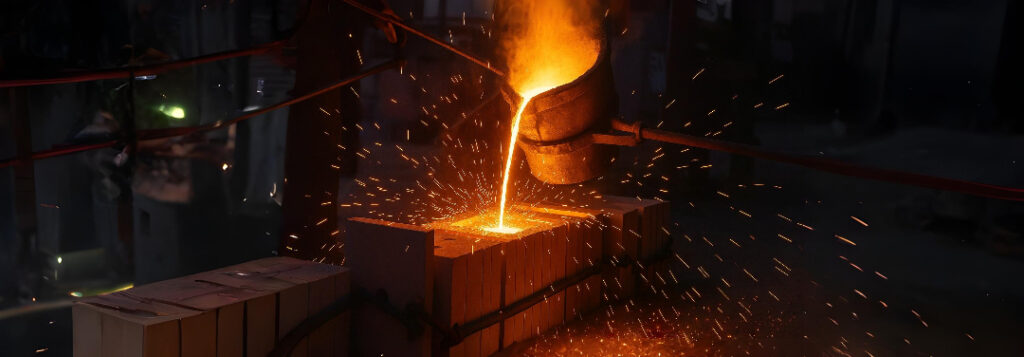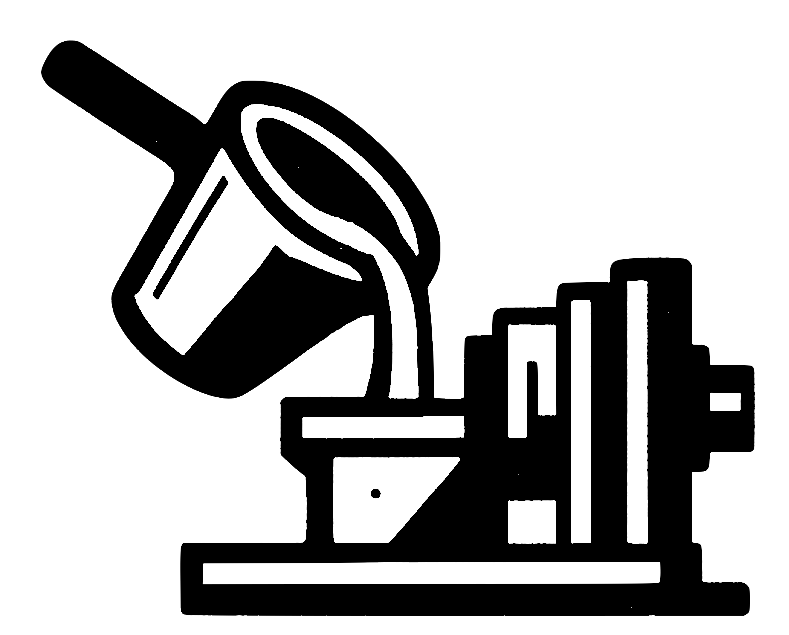
Vacuum-Assisted High-Pressure Casting
High-pressure die casting (HPDC) is great for making thousands of aluminium parts every day.
Its weakness is porosity—tiny voids that hide inside the metal. Electric-vehicle makers now CT-scan every structural part and will reject anything with more than 0.3 % void volume. Standard casting methods rarely pass that test.
Pulling a vacuum during the shot fixes the problem.
What a Vacuum Actually Does
| Result you care about | What the vacuum removes | Measured benefit in real plants |
|---|---|---|
| Fewer voids | 90–98 % of trapped air | X-ray scrap falls from 6 % to < 1 % |
| Higher strength | Hidden gas pockets disappear | Fatigue life +25 % (AlSi10Mg alloy) |
| Thinner ribs fill | Metal can flow smoothly at just 0.45 m s⁻¹ (about 1.5 ft s⁻¹) | 0.7 mm ribs fill with no mis-runs |
| Shorter spray cycle | Less “solder” (metal sticking to the die) | Cycle time –2 s; lubricant cost –35 % |
Why it works: Molten aluminium forms a paper-thin oxide skin. If the skin folds over itself, any air between the layers inflates the fold into a void. Vacuum pulls that air away before the fold happens, so the layers stay flat and harmless.
Two Ways to Pull Air Out
- Shot-Sleeve Vacuum (SSV)
The sleeve is the horizontal cylinder that pushes metal into the die. A small valve in the plunger tip opens for a split-second, sucking air out just before the metal moves.- Pros: removes most air early.
- Cons: the valve lives in hot oil mist—wipe it clean once a shift.
- Die-Cavity Vacuum (DCV)
Vent pins in the casting cavity open to a vacuum tank.- Pros: easy retrofit, no moving parts in the sleeve.
- Cons: smaller volume, removes only the last 5–10 % of air.
Best practice: Use both at once. SSV handles bulk air; DCV finishes the job.
Hardware Cheat Sheet (per 3 000-ton press)
| Item | Key spec | Why it matters |
|---|---|---|
| Vacuum pump | 400 m³ h⁻¹, down to 40 mbar | Pulls air fast |
| Vacuum tank | 80 L at 20 mbar | Instant “gulp” of low-pressure air |
| Flexible hose | 32 mm PTFE/stainless | Leak < 0.1 mbar L s⁻¹ |
| Sleeve valve | Opens in 60 ms | Hardened tip resists molten metal |
How Fast Must the Air Leave?
Vacuum level drops like this:
P(t) = P₀ × e^(–t/τ)
τ = V / Qₑ
V = free volume (litres), Qₑ = effective pump speed (litres s⁻¹)
Targets to hit:
- Shot sleeve: < 50 mbar (about 5 % of normal air pressure) within 0.12 s of valve opening.
- Die cavity: < 80 mbar before the metal front arrives.
Staying above 120 mbar when metal hits the gate usually creates visible blowholes.
Vent Pin Sizing—Simple Rule
Vent pins are tiny steel rods that lift a hair when air exits, then seat tight as metal arrives.
Total open area of all vent pins must pass the air in ≤ 0.15 s. For a common AlSi10Mg alloy, two pins 8 mm diameter × 45 mm long will clear about 11 L s⁻¹ of hot gas—enough for most EV battery-tray cavities.
Place pins in the last areas to fill so escaping air flows with—not against—the metal.
Seals—Keep Air Out, Vacuum In
- Static (non-moving) joints: Nitrile O-rings, 95 A hardness, squeezed 20 %.
- Moving slides: Copper–graphite rings plus a burst of boron-nitride spray every 1 000 shots.
Check with a helium “sniffer.” Leak limit: 0.04 mbar L s⁻¹.
Timing Example (2 800-tonne machine)
| Action | Time stamp |
|---|---|
| Valve opens | 0 ms |
| Sleeve hits 50 mbar | 100 ms |
| Metal ladle tilts | 120 ms |
| Plunger starts slow move | 180 ms |
| Valve closes (metal 15 mm away) | 260 ms |
| Plunger switches to fast shot | 280 ms |
Closing early prevents molten aluminium from shooting into the vacuum line.
Sensors to Watch
- Vacuum transducer on sleeve—alerts you if pressure drop slows (meaning a leak).
- Thermocouple in a vent pin—spikes when metal reaches it, proving timing.
- Acoustic sensor on die platen—hears “solder” build-up before you see defects.
Alarm if sleeve pressure at 0.12 s ever exceeds 60 mbar.
Quick Troubleshooting
| Problem | Why it happens | Fast fix |
|---|---|---|
| Pressure pops back to 200 mbar | Valve clogged with oil | Add 0.5 s air-knife blast |
| Voids near vents | Metal froze before all air escaped | Add a heat-sink pin; tweak die spray |
| Metal sticks to vent pin | Metal hits pin too fast | Cut gate speed 10 %; polish runner |
“Ready for Production” Checklist
- Sleeve < 50 mbar in 0.12 s
- Cavity < 80 mbar at metal arrival
- Leak rate < 0.05 mbar L s⁻¹
- CT porosity < 0.3 % (10 random parts)
- No more than 0.1 mm solder on vent pin after 10 000 shots
One-Minute Summary
- Goal pressures: 50 mbar in the sleeve, 80 mbar in the cavity.
- Use both shot-sleeve and cavity vacuum to get there fast.
- Size vent pins so air is gone in under 0.15 s.
- Log every evacuation curve; rising pressure = leak or clog.
- Typical plant slashes X-ray scrap by 80 % and ends costly resin impregnation with payback < 1 year.
Master these basics and you can ship CT-grade aluminium castings without endless trial-and-error.
